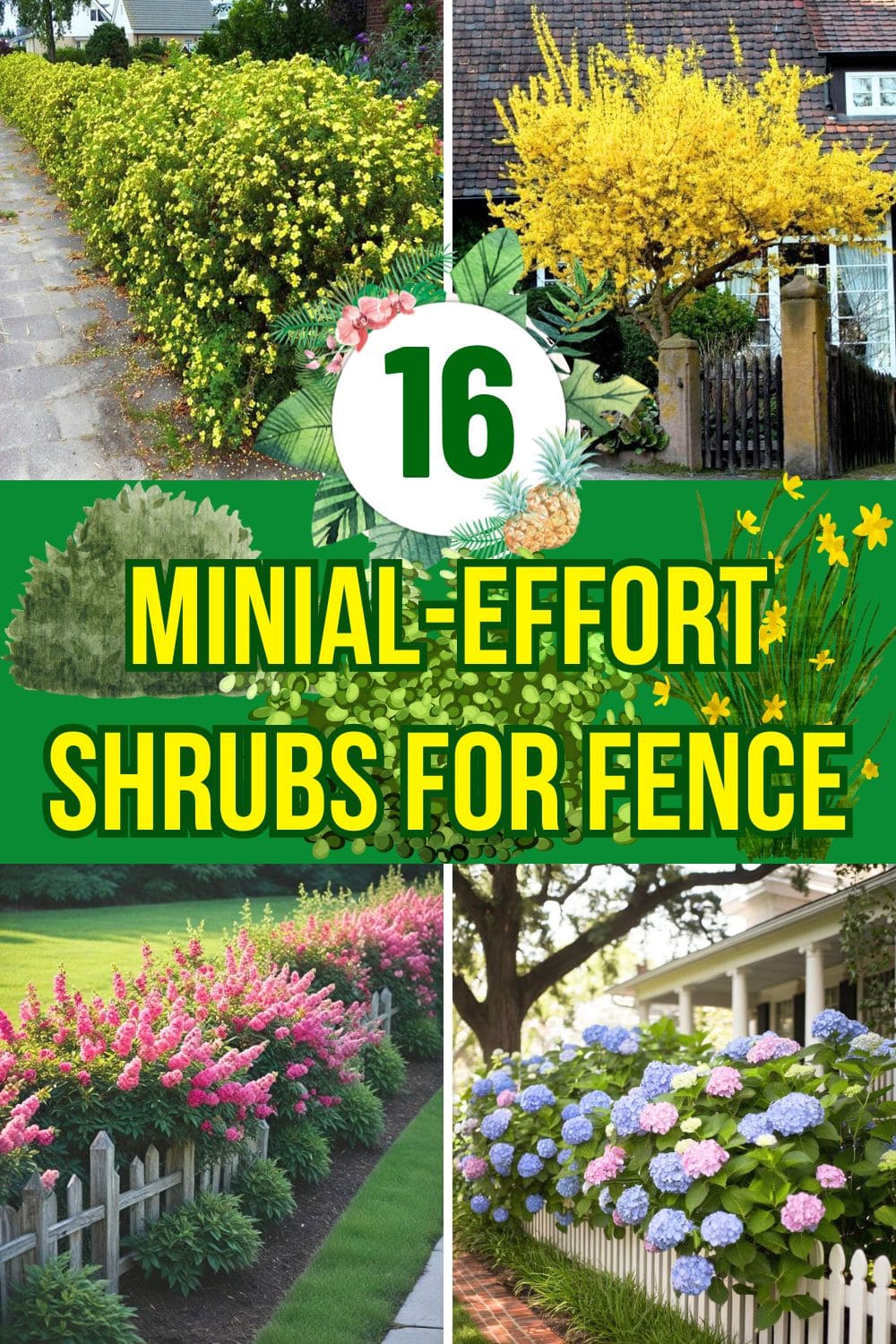A bare fence line can feel cold, lifeless, or just plain boring. But with the right shrubs, it turns into a living, breathing part of your garden – one that needs little from you and gives back tenfold. That’s exactly why I’ve pulled together this list of 16 minimal-effort shrubs that make fence lines look downright fabulous.
You don’t need to be a landscape designer or spend hours digging and pruning. These are the kind of shrubs you plant once and enjoy for years, with just an occasional trim or splash of water.
From evergreen structure to seasonal blooms and privacy-boosting foliage, these choices cover it all. Whether your space is sun-drenched or shaded, formal or rustic, there’s something here that will quietly thrive and make your fence look like a natural masterpiece.
#1. Boxwood (Buxus sempervirens)
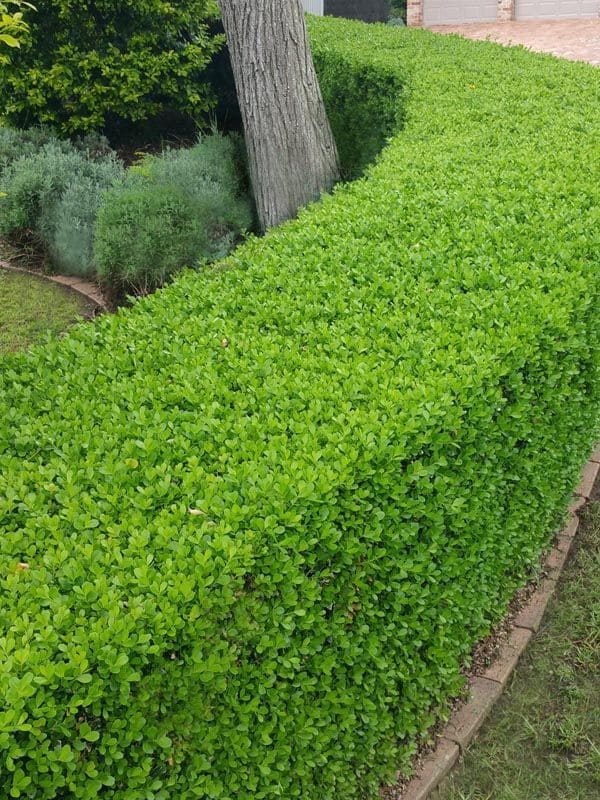
Boxwood is one of those faithful friends in the garden, you forget it’s there, but it always looks good. The classic ‘Wintergreen’ and dwarf ‘Suffruticosa’ types are especially tidy, perfect for a clean hedge along the fence.
I use it to soften harsh fence corners. It thrives in sun or partial shade and tolerates drought once established. No bloom fuss, just dense evergreen foliage. Trim it once a year, or not at all if you like a wilder shape.
#2. Spirea (Buxus sempervirens)
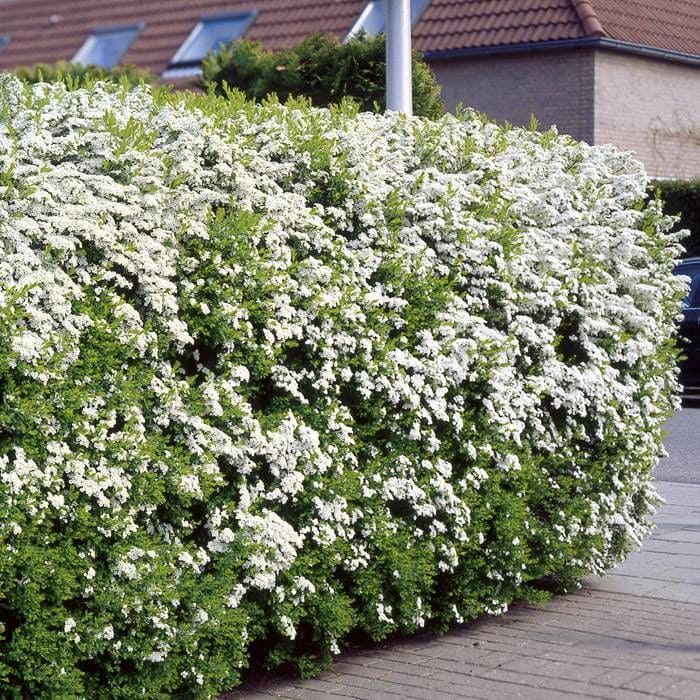
Spirea brings color and structure, especially varieties like ‘Goldflame’ and ‘Little Princess.’ What I love? You get flushes of flowers in late spring and even again in summer if you deadhead lightly. No diseases, no pests, just color.
It thrives in full sun, handles poor soil, and once it’s rooted, barely flinches in dry spells. I’ve used it along narrow fence lines, it stays compact and neat.
#3. Ninebark (Physocarpus opulifolius)
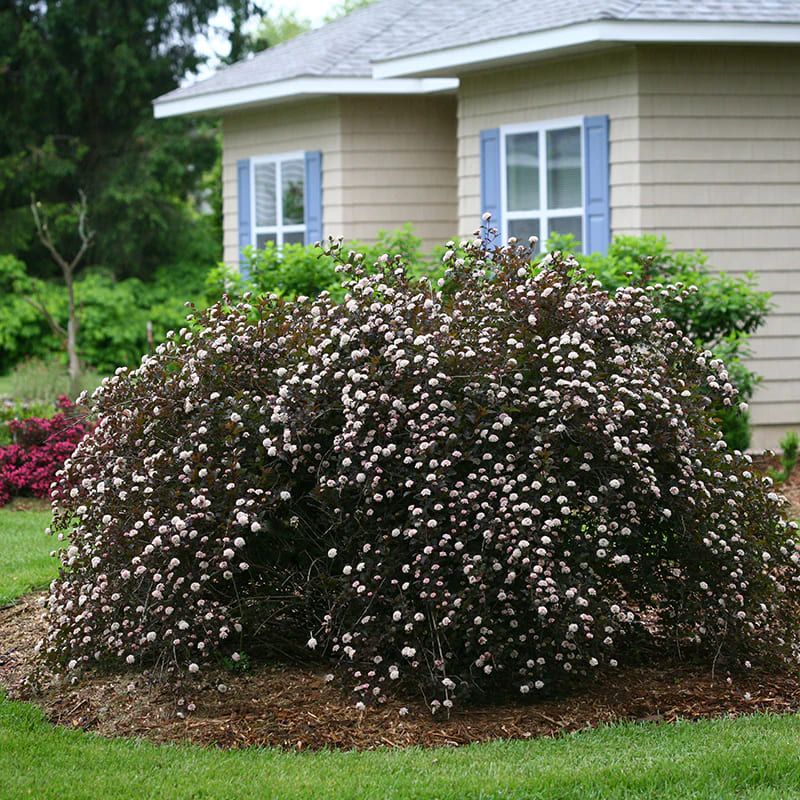
Ninebark has that dramatic deep-purple or copper foliage that always gets people asking what it is. Try ‘Diabolo’ or the dwarf ‘Tiny Wine’ for small spaces. Bonus: it flowers in spring and has exfoliating bark that’s stunning in winter.
It handles clay soil like a champ and grows well even if you forget it’s there. I rarely water mine past the first season. Just trim to shape.
#4. Abelia (Abelia x grandiflora)
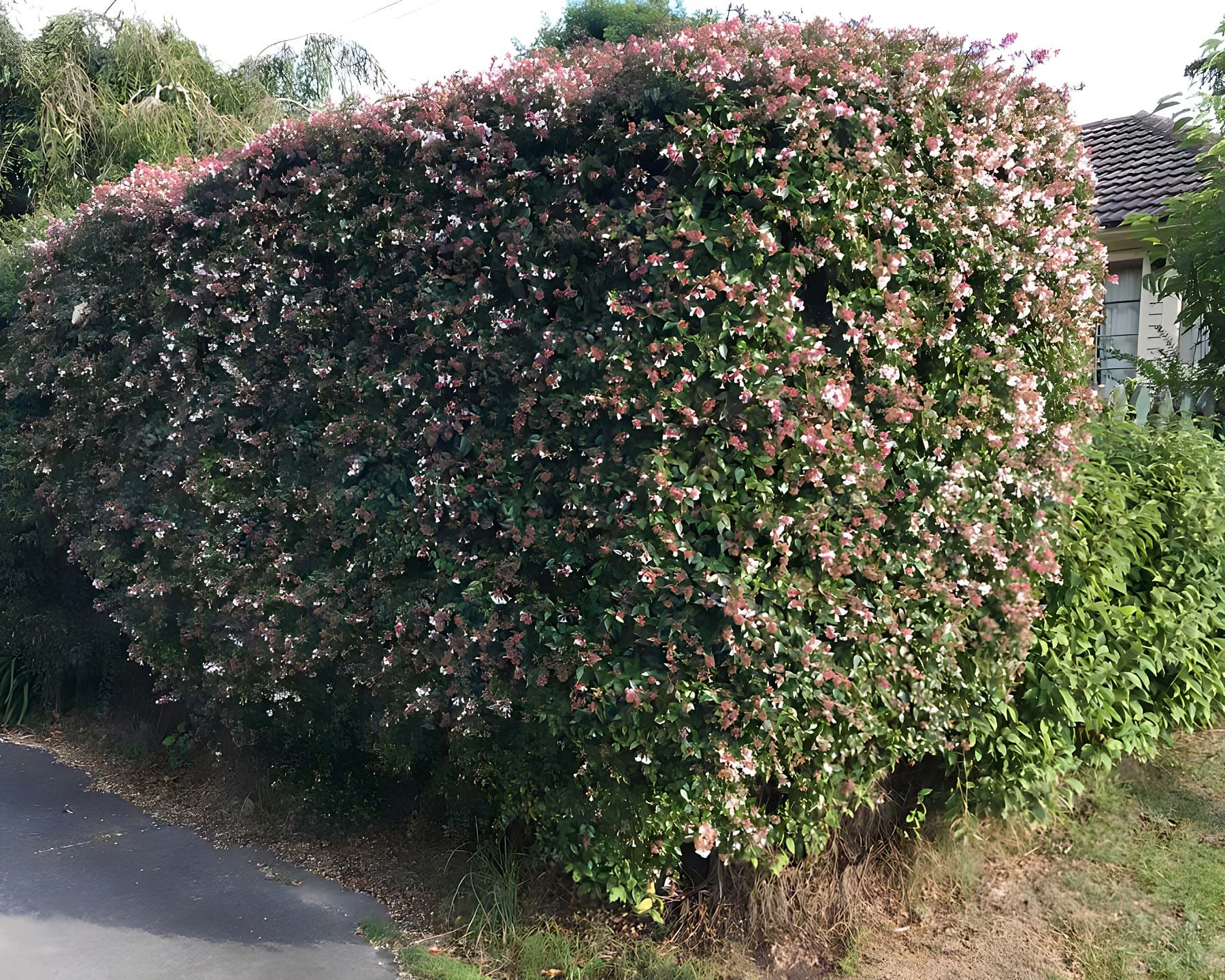
Abelia is underrated. The glossy leaves, arching branches, and long-blooming flowers from summer into fall make it a low-effort stunner. ‘Kaleidoscope’ is a favorite, it changes colors through the seasons.
Sun-loving and tolerant of heat, abelia is forgiving. It draws pollinators, doesn’t mind pruning, and I’ve never had to treat it for a single disease. The more you ignore it, the better it looks.
#5. Viburnum (Viburnum tinus or V. opulus)
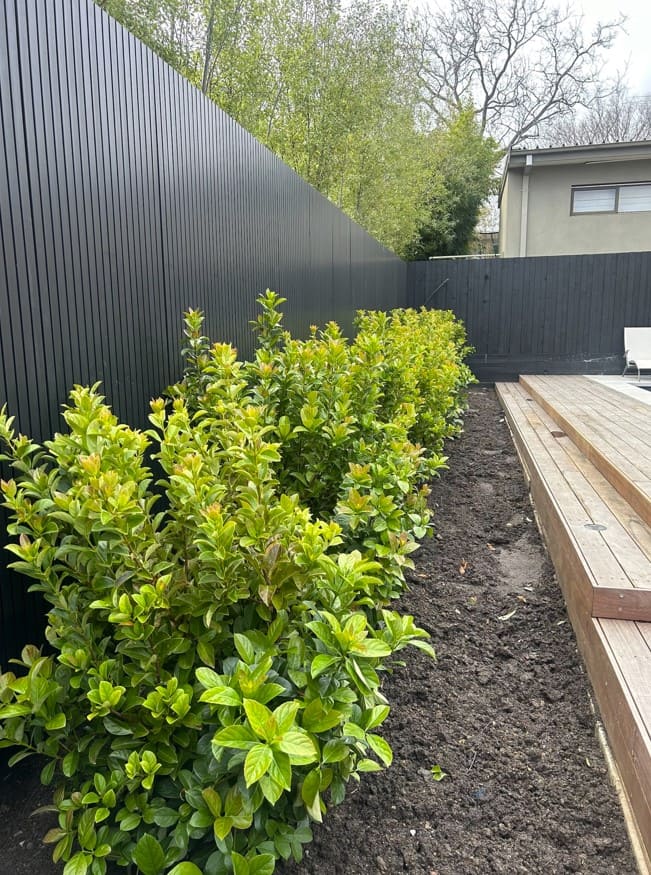
If you want blooms, berries, and bird appeal, viburnum ticks every box. Evergreen types like V. tinus give you year-round coverage, while deciduous ones like V. opulus flaunt spring flowers and autumn berries.
They grow fast, handle pruning well, and thrive in a variety of soils. I often pair viburnum with a picket fence, it softens the lines beautifully.
#6. Mock Orange (Philadelphus coronarius)

When this one blooms, you’ll stop in your tracks. The fragrance is unforgettable, think orange blossoms mixed with warm evenings. I have ‘Belle Etoile’ and ‘Snowbelle’ planted near my side fence.
It handles sun or part shade and only needs a cutback every few years to keep it flowering. Perfect if you like that wild, romantic garden vibe without too much upkeep.
#7. Barberry (Berberis thunbergii)
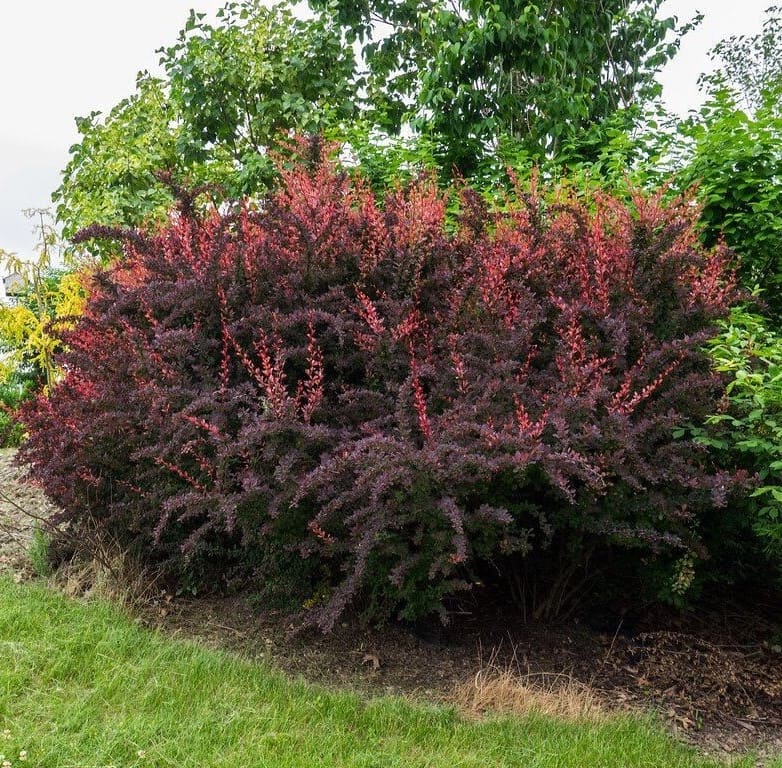
Barberry is your colorful, thorny fence protector. The deep red or golden foliage looks great all season. ‘Crimson Pygmy’ is compact and tidy.
I’ve used barberry when I needed a bit of defense along a low fence, it keeps pets and people from cutting through. Once it’s in the ground, forget about it. Drought? No problem. Deer? Nope. Just don’t over-fertilize, this one likes to be left alone.
#8. Sweetspire (Itea virginica)
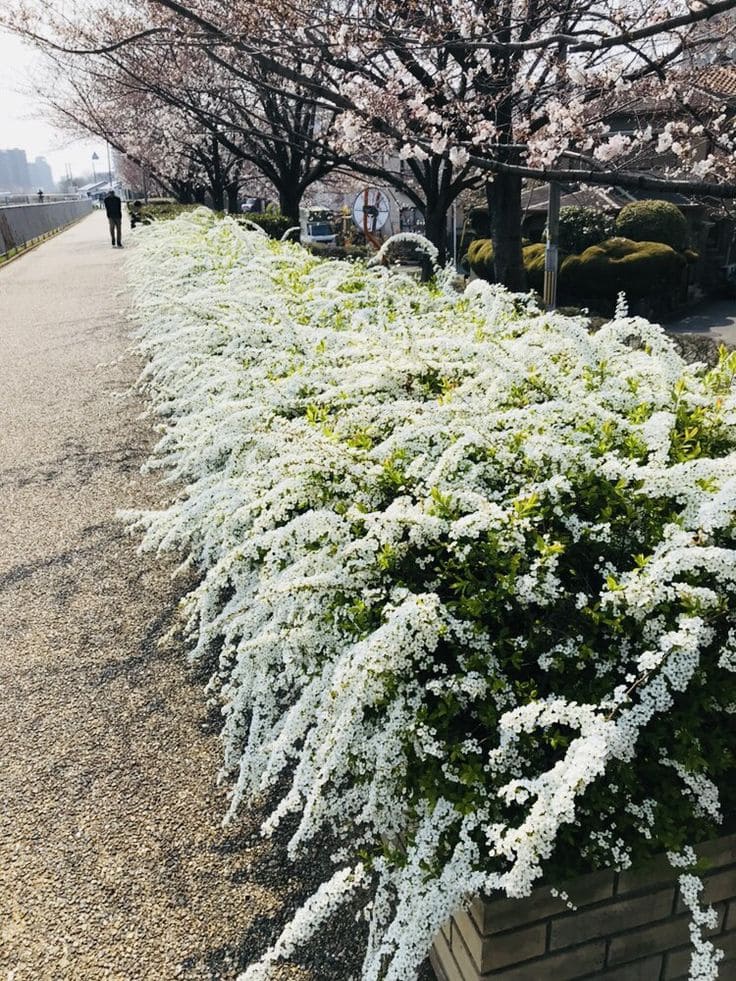
Native and low-maintenance, Sweetspire adds fragrance and fiery fall color. ‘Little Henry’ stays under 3 feet and works beautifully along short fences or even in containers.
It handles soggy spots, which is rare for flowering shrubs. In fact, I use it near my downspout area where nothing else grows. It blooms in early summer and holds up beautifully through seasons.
#9. Holly (Ilex crenata or I. aquifolium)
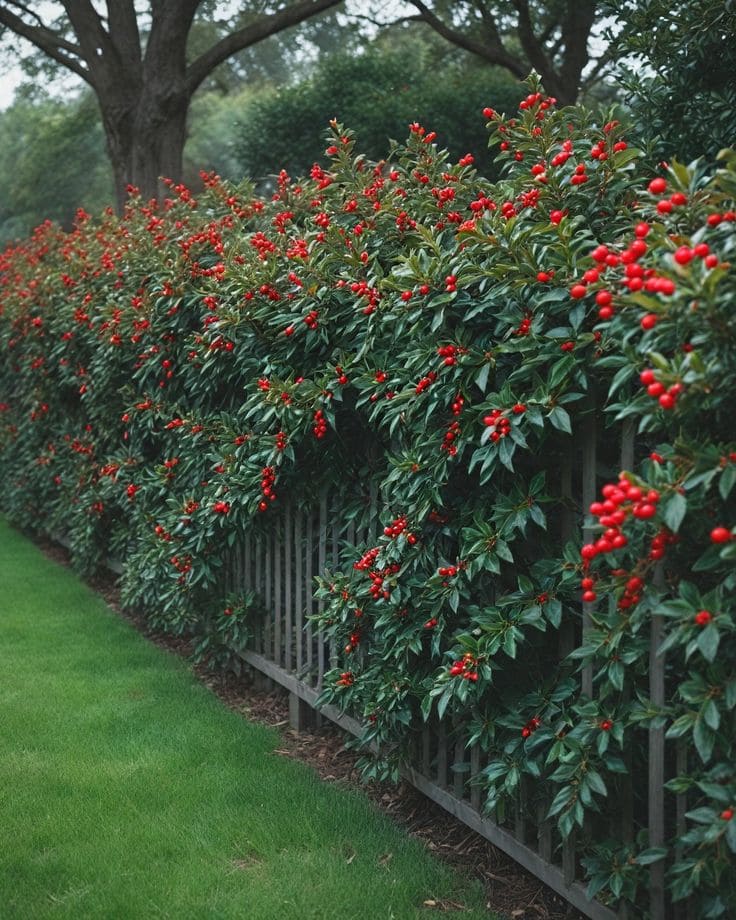
Holly gives you evergreen structure and those festive berries if you plant a male and female together. ‘Sky Pencil’ holly is perfect for tight spaces, it grows narrow and tall like a green exclamation point.
It grows in sun to part shade, tolerates clay, and is easy to shape. I prune mine once a year and that’s it. A true low-hassle evergreen.
#10. Potentilla (Potentilla fruticosa)
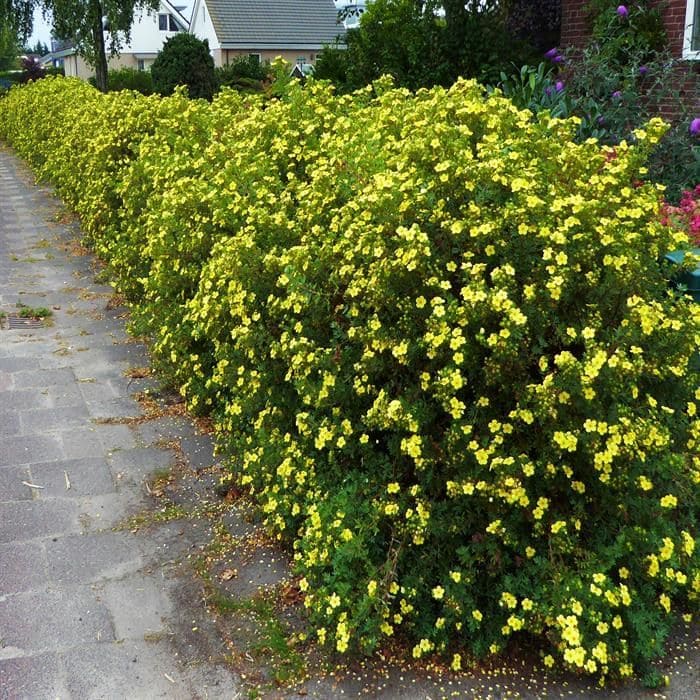
Potentilla is cheerful, compact, and nearly indestructible. You’ll see it in city plantings for good reason, it blooms nonstop from late spring to fall. ‘Goldfinger’ and ‘Abbotswood’ are classics.
They love sun, shrug off frost, and laugh at neglect. I once forgot to water a row for a whole summer and they still bloomed like nothing happened.
#11. Cotoneaster
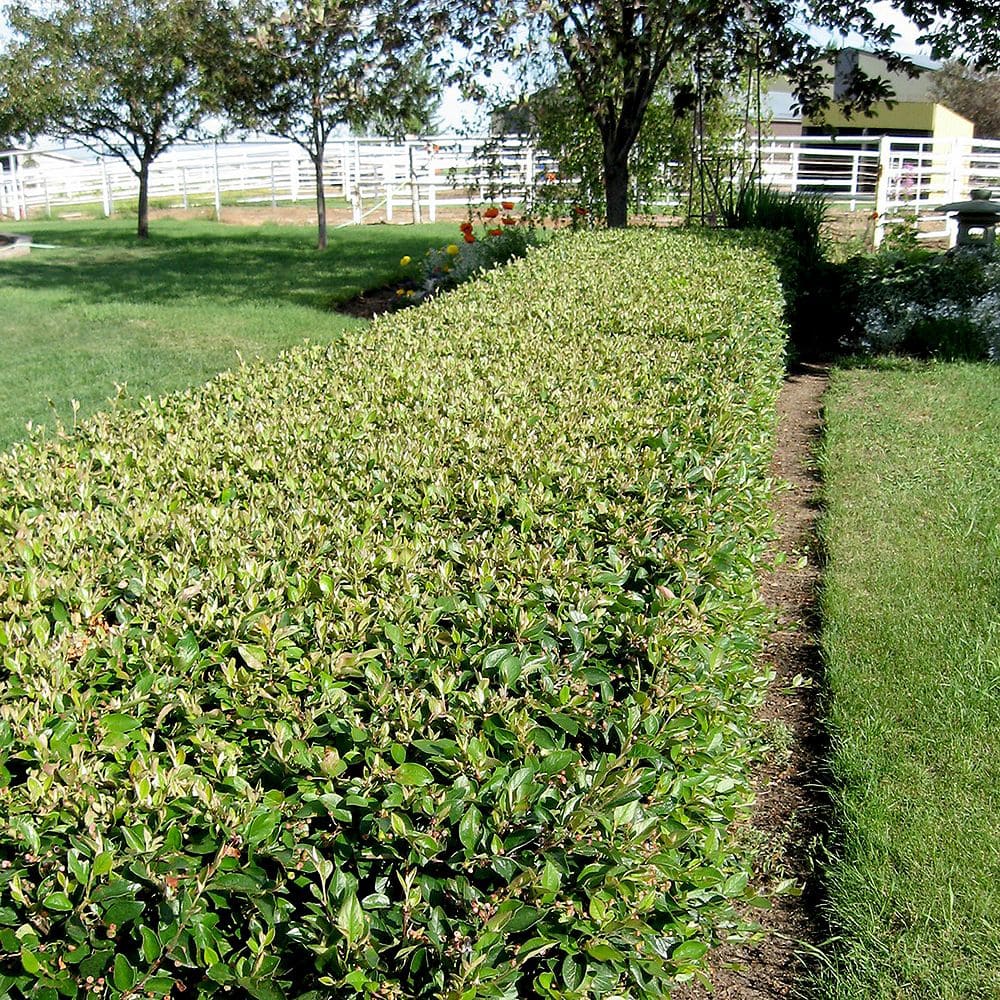
Cotoneaster has this graceful arching habit, tiny glossy leaves, and red berries that birds go crazy for. Horizontalis is great if you want to spill over rocks or a short retaining wall near your fence.
It’s low-maintenance, drought-tolerant, and grows fast. Once a year I give it a little haircut. The rest of the time, I let it spread and do its thing.
#12. Privet (Ligustrum vulgare)
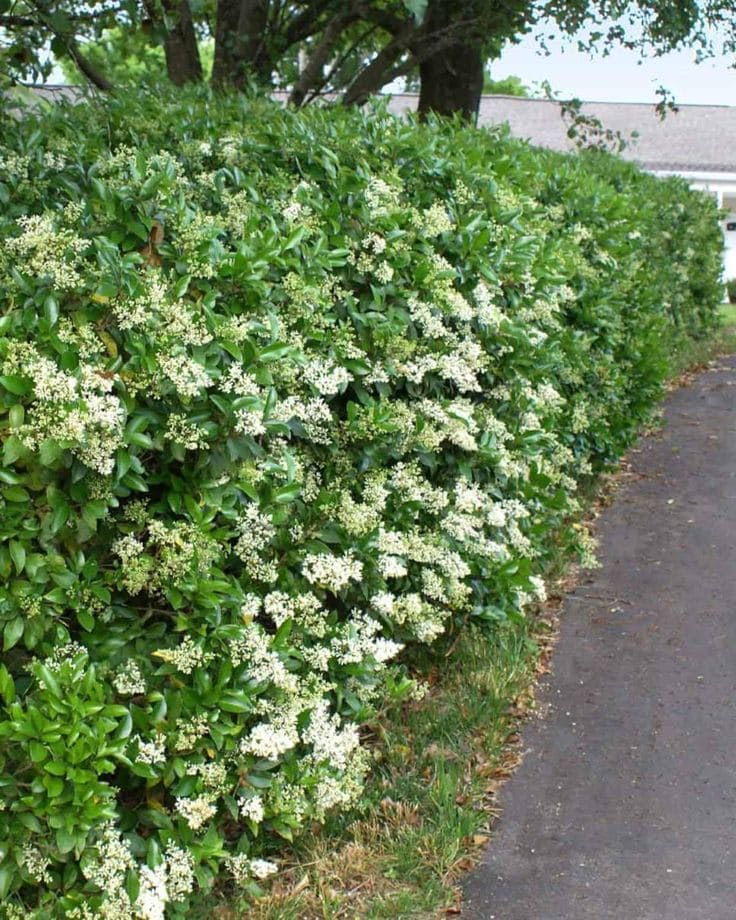
Privet gets a bad rap, but if you want a fast-growing privacy shrub, it’s hard to beat. I use it for quick fence coverage. ‘Golden Vicary’ adds brightness, while the traditional green type is a classic.
It grows in full sun or part shade, and while it needs occasional pruning to stay neat, it’s tough, tolerant, and reliable. In windy areas, it stands strong.
#13. Butterfly Bush (Buddleia davidii)
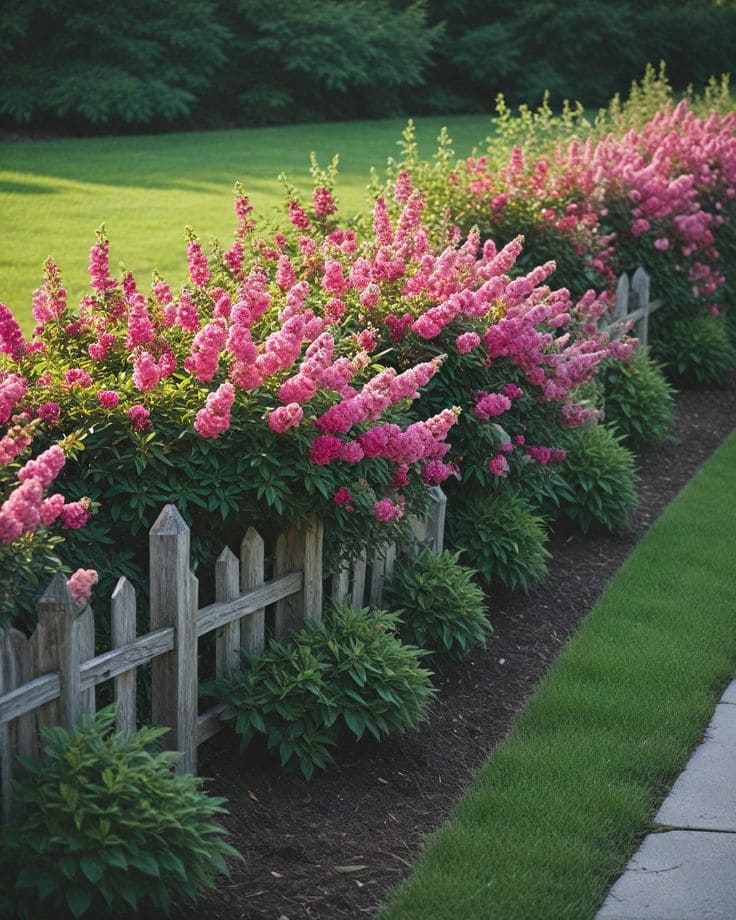
If you love wildlife and want blooms all summer, butterfly bush delivers. It’s not just for butterflies, the hummingbirds and bees love it too. ‘Miss Molly’ is compact and colorful, and doesn’t self-seed like older varieties.
This one is heat- and drought-tolerant, perfect for neglected areas. Cut it back in spring to about a foot, and it bounces back stronger than ever.
#14. Forsythia (Forsythia x intermedia)
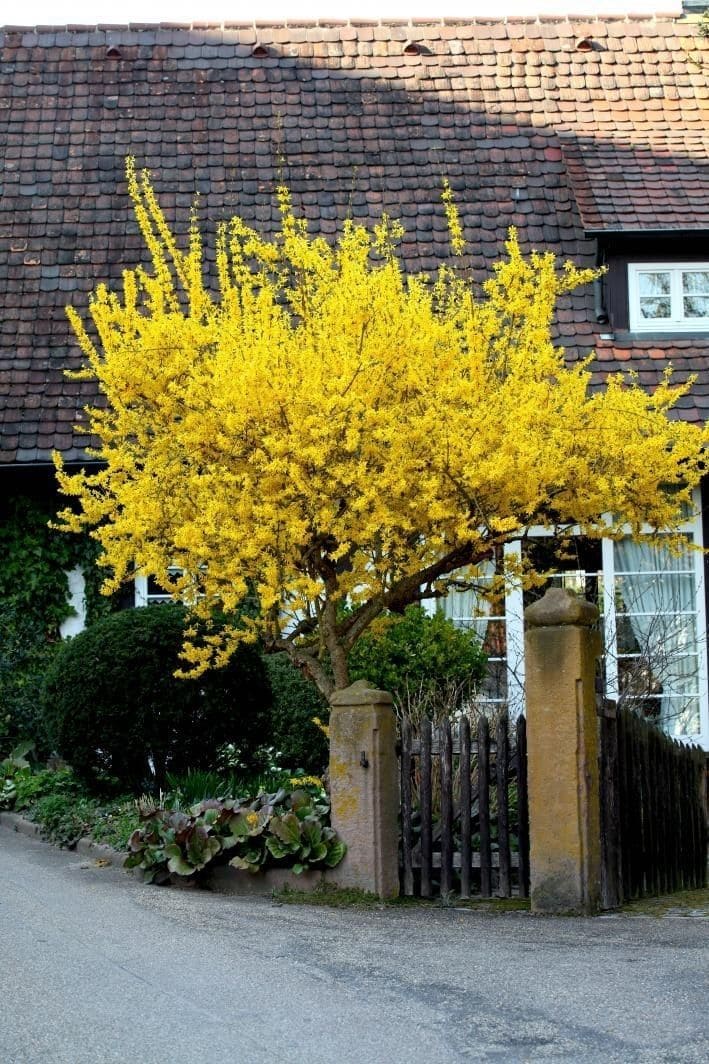
Forsythia is spring’s golden trumpet. It’s usually the first to bloom, bursting into brilliant yellow before the leaves even show up. I have a row planted along my back fence, and each year, it feels like the garden wakes up all at once.
‘Lynwood Gold’ and ‘Show Off’ are popular for their intense bloom and tidy habit. This shrub is as tough as they come. It tolerates poor soil, urban air, and even neglect.
Full sun gives the best flower show, but it’ll still grow in light shade. After blooming, I just prune the oldest canes to the ground, keeps it youthful and flowering better each year.
#15. Azalea (Rhododendron spp.)
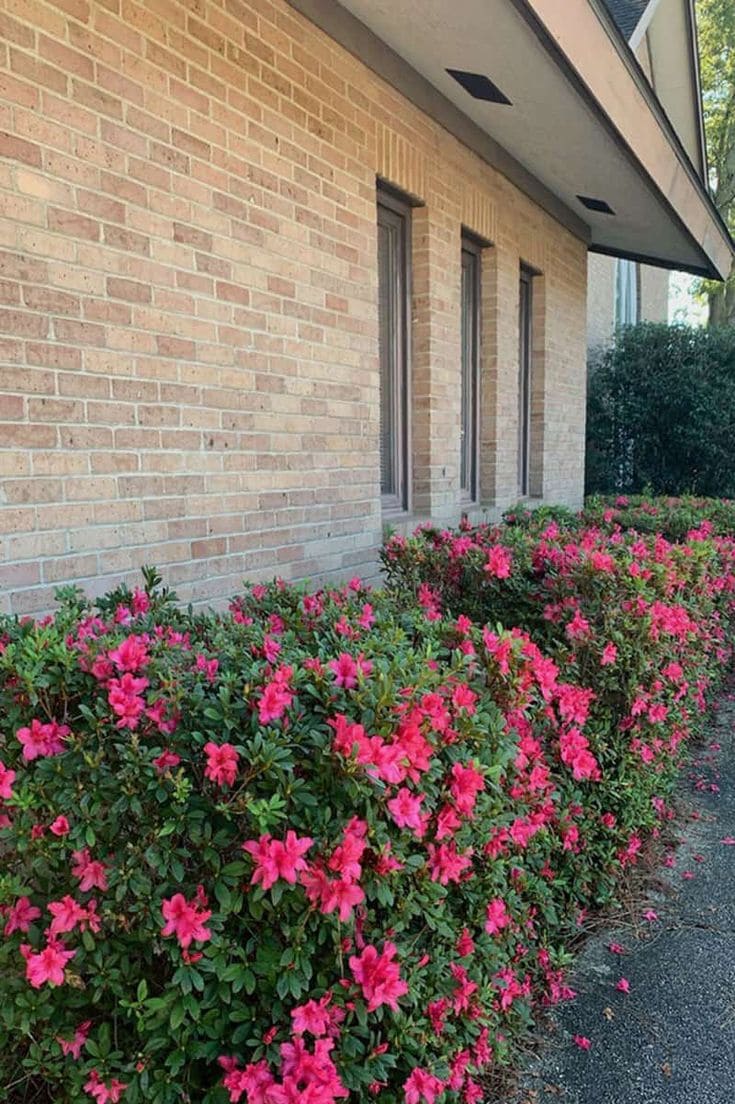
If you’ve ever stood in front of a blooming azalea and gasped, you’re not alone. These shrubs offer an explosion of color in early spring that feels like a celebration.
For fence lines, I prefer evergreen types like ‘Formosa’ or ‘Girard’s Fuchsia’ for year-round greenery. Deciduous types like ‘Gibraltar’ bring wild splashes of orange or red.
They thrive in dappled shade or morning sun with afternoon protection. Acidic soil is a must, I mix pine needles into the mulch and add a bit of sulfur if needed. Water deeply during dry spells, especially in summer. Once settled, azaleas mostly take care of themselves.
#16. Hydrangea (Hydrangea macrophylla, H. paniculata, H. arborescens)
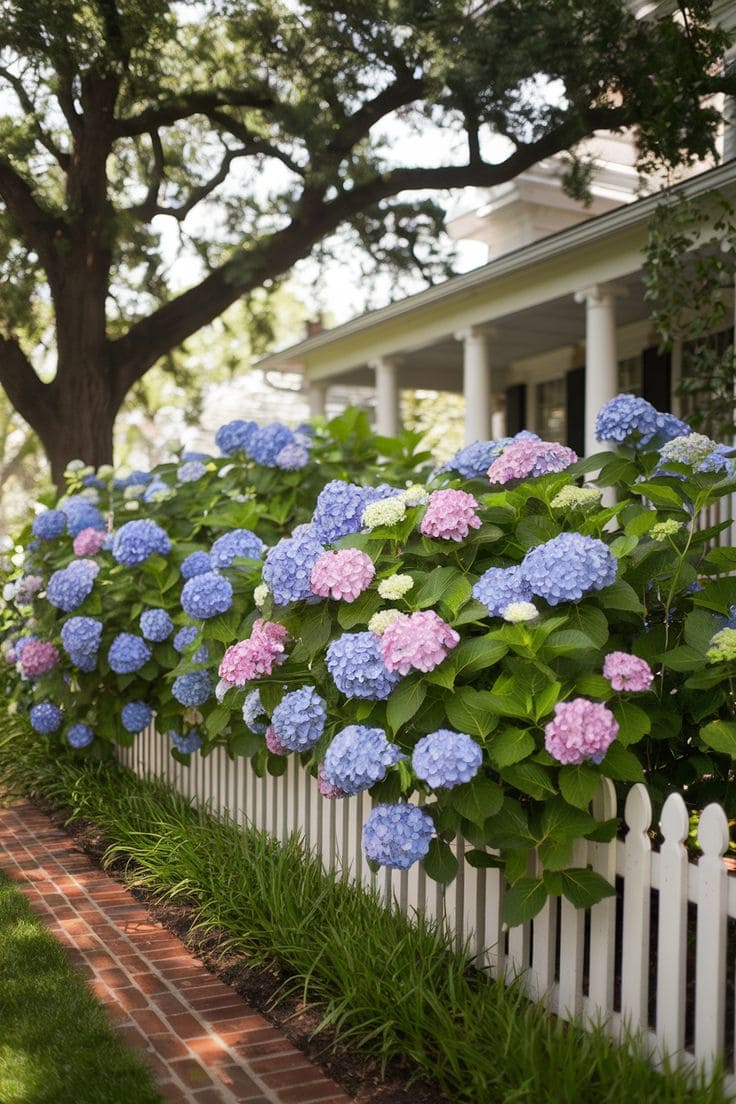
Hydrangeas are like the crown jewels of any fence line. Whether you love the mophead ‘Endless Summer’, the conical blooms of ‘Limelight’, or the old-fashioned charm of ‘Annabelle’, there’s a type for everyone.
I have all three scattered along different sections of my fence, and they never disappoint. They prefer morning sun with afternoon shade, especially in hot zones.
Keep the soil moist and rich in organic matter. I feed them once in early spring with compost and again in summer with a low-nitrogen fertilizer. Pruning depends on the type, but in general, less is more unless you know the bloom habits.
